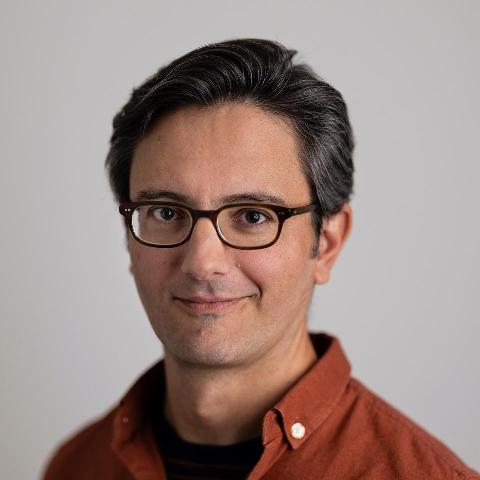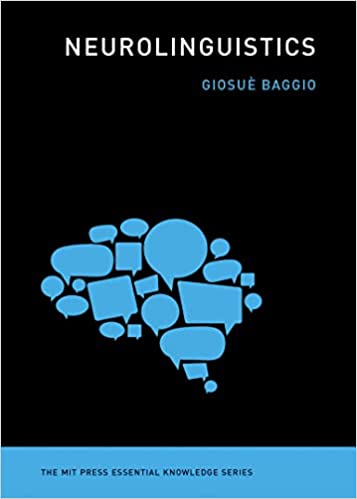How Human Language Is, and Isn’t, Like a Computer Program
A key difference is that a language cannot be downloaded into the brain, like a program. It must be painstakingly acquired
Giosuè Baggio, professor of psycholinguistics at the Norwegian University of Science and Technology, has mixed feeling about comparing the brain’s management of human language to computation. In some ways, it is a useful analogy:
If we look at what the brain does while people perform a language task, we find some of the signatures of a computational system at work. If we record electric or magnetic fields produced by the brain, for example, we find signals that are only sensitive to the identity of the sound one is hearing — say, that it is a b, instead of a d — and not to the pitch, volume, or any other concrete and contingent features of the speech sound. At some level, the brain treats each sound as an abstract variable in a calculus: a b like any other, not this particular b. The brain also reacts differently to grammar errors, as in “I want that beautiful trees in our garden,” and incongruities of meaning, as in “I want that beautiful democracy in our garden”: Rules and constraints matter. We are slowly figuring out how the brain operates with the abstract system that is language, how it arranges morphemes — the smallest grammatical units of meaning — into words, words into phrases, and so on, on the fly. We know that it often looks ahead in time, trying to anticipate what new information might arrive, and that words and ideas are combined by a few different operations, not just one, kicking in at slightly different times and originating in different parts of the brain.
Giosuè Baggio, “Finding Language in the Brain” at MIT Press Reader (November 25, 2022)
But, as the author of Neurolinguistics (MIT, 2022), he also sees ways in which the brain does not work with language as a computer works with a program at all.
First, our brains behave very differently from computers:
Neurolinguists like to say that words and their meanings are “stored” in memory and “retrieved” from memory. And in some sense they are, just not in the sense of personal computing. When I open a text file on my computer, I expect it to look exactly the same regardless of other files and browser tabs open at that time. This is not how information is “retrieved” in the brain. Some details of the word’s meaning that is activated will depend on context: The meaning of “tree” that one uses to derive an interpretation of “I want that tree in our garden,” its nuances and implications, may differ depending on whether we are looking at a potted artificial Christmas tree or at a rare olive tree.
Giosuè Baggio, “Finding Language in the Brain” at MIT Press Reader (November 25, 2022)

Second, language is not downloaded like a program:
If one could upload a language to a newborn’s brain, one would certainly not magically create a competent, fluent speaker of that language: The “hardware,” a developing — but still immature — brain, would not be ready to run the “software,” a full-fledged language. In language learning, the “software” would have to be programmed in gradually, as a function of the stage of growth and maturation of the “hardware.” That this is not how computers and programming work just shows that the software-vs-hardware metaphor is not quite right for language and the brain.
Giosuè Baggio, “Finding Language in the Brain” at MIT Press Reader (November 25, 2022)
The infant is in no way suited to absorbing a language that way; language use grows with the ability to comprehend. Which just amounts to saying that, when we are talking about human language, we can’t leave out the role of the human mind.
Baggio does not get into how human language originated, which is just as well because no one really knows. The Linguistic Society of America offers some thoughts, including
The basic difficulty with studying the evolution of language is that the evidence is so sparse. Spoken languages don’t leave fossils, and fossil skulls only tell us the overall shape and size of hominid brains, not what the brains could do. About the only definitive evidence we have is the shape of the vocal tract (the mouth, tongue, and throat): Until anatomically modern humans, about 100,000 years ago, the shape of hominid vocal tracts didn’t permit the modern range of speech sounds. But that doesn’t mean that language necessarily began then. Earlier hominids could have had a sort of language that used a more restricted range of consonants and vowels, and the changes in the vocal tract may only have had the effect of making speech faster and more expressive. Some researchers even propose that language began as sign language, then (gradually or suddenly) switched to the vocal modality, leaving modern gesture as a residue.
Ray Jackendoff, “How did language begin?” at FAQ: How Did Language Begin?
At How Stuff Works, we are told that there are two main theories of language origin: Steven Pinker and Paul Bloom argue in “Natural Language and Natural Selection” that language evolved because it helped early humans communicate survival methods (adaptation theory). Noam Chomsky and Stephen Jay Gould argue that language was a by-product of evolution: “simply because the physical structure of the brain evolved, or because cognitive structures that were used for things like tool making or rule learning were also good for complex communication” (exaptation theory).
The problem with both theories is that many carnivorous life forms — wolves, for example — survive quite nicely, left to themselves, without anything like human language. Language’s value to us humans has never been mainly that it enables survival but rather that it enables the development of a culture and a civilization, and a communal life of the mind.
Five other theories, offered at Thoughtco, are — I am not kidding — the Bow-Wow theory, the Ding-Dong theory, the La-La Theory, the Pooh-Pooh Theory, and the Yo-He-Ho Theory. While their names don’t suggest it, these theories originated with serious linguists. But yes, all have significant flaws. As Richard Nordquist tells us,
As Bernard Campbell states flatly in “Humankind Emerging” (Allyn & Bacon, 2005), “We simply do not know, and never will, how or when language began.”
It’s hard to imagine a cultural phenomenon that’s more important than the development of language. And yet no human attribute offers less conclusive evidence regarding its origins.
Richard Nordquist, “Five Theories on the Origins of Language” at Thoughtco (June 29, 2020)
Well, there is one human attribute that resembles language: the human consciousness from which it proceeds. We likewise have many theories, none satisfactory, about how our consciousness originated.
Theorizing about such things can be fun, provided we don’t take it too seriously and don’t mistake a persuasive presentation for actual certainty.
You may also wish to read: Six brain regions control language — but we’re not sure how. We’re learning more about human language but it remains, in its way, mysterious. A recent fMRI study of speakers of 45 languages identified the “language-processing only” regions but the relationship between them is not yet known.
